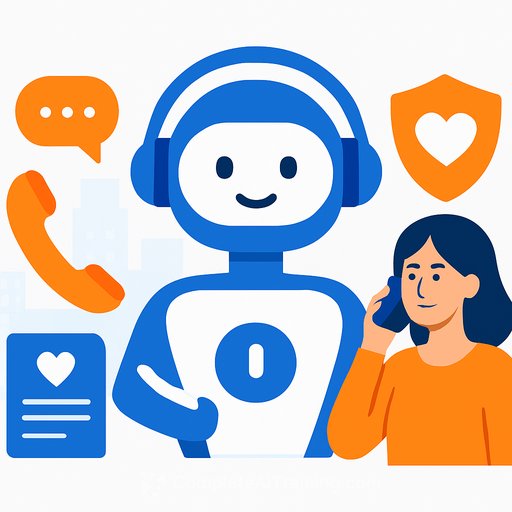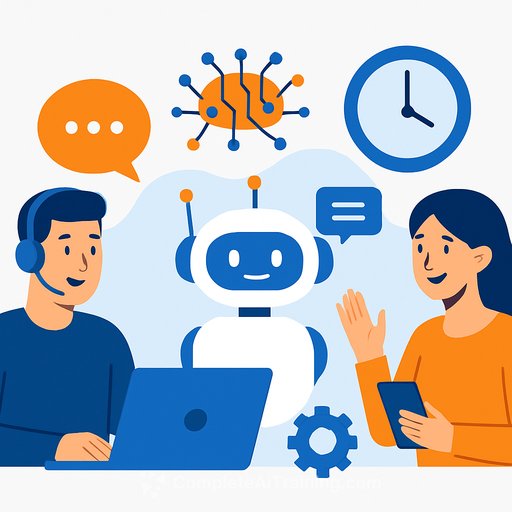Agentic AI in Customer Service: What Early Adopters Want You to Know
Hype is loud. Results are quiet. The latest Salesforce State of Service data shows leaders want AI handling half of cases within two years, yet adoption of agentic tools is still low. Leaders who are getting outcomes agree on one thing: start with workflow goals and measurable KPIs, then slot AI in where it actually moves the needle.
As Salesforce's Kishan Chetan put it, the smarter approach now is choosing where AI should be customer-facing and making transfers to humans seamless. Complex issues and empathy still belong to people. Your job is to define that line clearly and hold your systems to it.
See Salesforce's State of Service survey
Start with a business goal, not a demo
AI doesn't know your customers or policies. You do. Pick one high-volume, rule-based process and measure the outcome. Engine, a travel platform, started broad across bookings but narrowed fast to one workflow: cancellations. That focus cut escalations, improved CSAT, and made results predictable.
Simplyhealth, a U.K. insurer, targeted reimbursements - the moment customers care about most: "Get my money back fast." Their agent flags anomalies, pays valid claims quickly, and deflects huge call volume without adding friction.
KPIs worth tracking from day one
- Containment rate (handled end-to-end by AI without handoff)
- Transfer quality (context passed, no repeat questions)
- Time to resolution and refund turnaround time
- CSAT by issue type (human vs. AI vs. hybrid)
- First contact resolution (FCR) and recontact rate
- Fraud/exception flag rate and accuracy
- Agent utilization on complex work (and impact on pay/retention)
Case study: Engine's "Eva" focuses on cancellations
Engine handles roughly 600,000 cases a year. Their AI agent, Eva, has processed 12,000 so far and currently takes on about 30% of incoming daily requests (300-400/day). Early on, broader scope created too many choices and escalations. Narrowing to cancellations tightened performance and pushed CSAT up because customers got instant answers.
Some cancellations still need a human to call a supplier - that was planned. Outliers escalate quickly. The team treats Eva like an employee with performance reviews and QA. Reviewing logs surfaced useful surprises, like multilingual responses in French and Spanish. Next up: voice pilots and a concierge experience that personalizes hotel options within policy and rewards preferences.
Case study: Simplyhealth automates reimbursements and FAQs
Reimbursements were the pressure point. Their agent verifies claims, flags suspicious activity, and speeds payouts. Outcome: 160,000 fewer calls per year and 99% claim satisfaction. An AI answering emails for common questions now runs 24/7, clearing about 2,000 queries per week that used to sit in queues.
Governance is formal. An AI Forum co-chaired by customer service and technology leaders set policies, staged rollouts with tight scopes, and expanded based on data. As AI took routine load, human agents moved upmarket - with a 35% pay rise over three years for higher-complexity work.
Know when not to use AI
If a customer is stuck at an airport rebooking a canceled flight, they want a person, now. For a simple hotel cancellation, they want zero friction. Engine built its routing on this exact distinction. Salesforce leadership echoes it: make the handoff clean and contextual so customers never repeat themselves.
Make AI fit your workflow: a practical checklist
- Map your top 5 contact drivers. Pick one narrow, rules-heavy use case with real volume.
- Define "success" upfront: containment, CSAT by flow, time to resolve, transfer quality, recontact.
- Design escalation rules and require full context handoff to agents.
- Start small. Limit channels or intents. Expand only when the data says it's working.
- Treat the AI like a new hire: train, test, QA its transcripts, and coach it continuously.
- Build governance: an AI steering group, data policies, model access rules, and audit trails.
- Tune for exceptions and fraud. Set thresholds for auto-approval vs. review.
- Invest in your people: move them to empathy-led and complex work; align compensation and skills.
- Don't forget language coverage, knowledge freshness, and voice channel readiness.
What this means for support leaders
The pattern is clear: focus beats ambition. Pick the workflow your customers care about, measure it hard, and scale only after it's solid. Keep humans on the work that requires judgment and empathy, and pay them accordingly.
Do that, and AI stops being a buzzword and starts being a dependable part of your service engine.
Upskilling your team
If you're building AI skills for support roles, explore structured learning paths by job function here: Complete AI Training - Courses by Job.
Your membership also unlocks:






